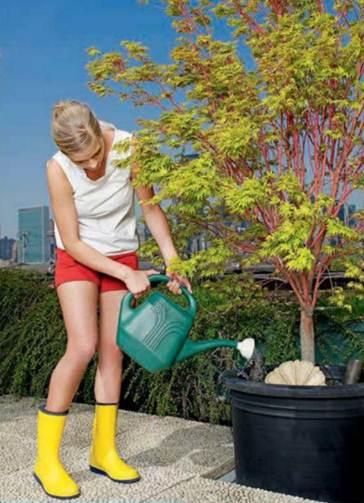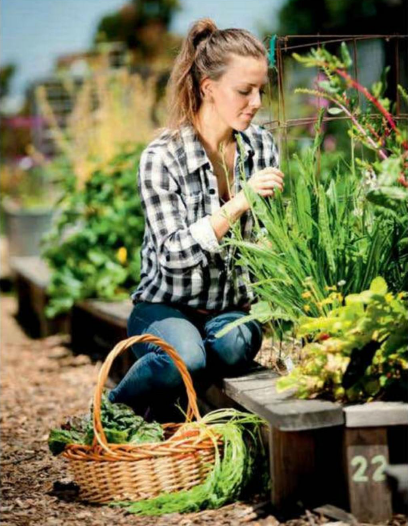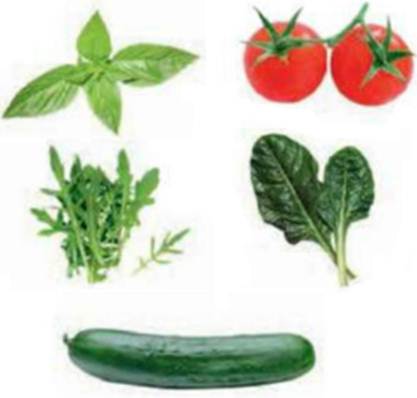An edible garden
is useful, beautiful and easier to create than you might think, no matter how much – or how little – space you have.
With many of us living in smaller spaces,
you might think growing an edible garden is out of the question. The average
Australian backyard has certainly shrunk, with block sizes around one-quarter
of the size of the 1950s. But you can grow an abundance of food in the smallest
of spaces. Whether you have a small backyard, courtyard or just a windowsill,
there are edible plants you can grow and harvest.
Benefits of an edible garden
An edible garden is cost-saving and
beneficial to your health and the environment, says Arabella Forge,
nutritionist and author of “Frugavore” (Black Inc., $26.99). “An organic
lettuce costs around five dollars whereas a punnet of lettuce seedlings is much
less.”
Forge recommends an edible garden to
“reduce food miles and reduce waste by composting produce back into your soil”.
By far the biggest benefit of edible gardens is the nutrient-dense food supply.
“Nothing is as healthy as plants picked from your garden that are on your plate
in minutes,” she says.
What plants to choose?
The easiest foods to grow in small spaces
are herbs and leafy green vegetables such as silverbeet, lettuces or celery.
“These basic culinary staples are fast-growing, easy to maintain and a quick,
healthy addition to most meals,” says Forge.

These
basic culinary staples are fast-growing, easy to maintain and a quick, healthy
addition to most meals
If you’ve got more room to play with, Forge
recommends quick-growing plants such as zucchini, eggplant, rhubarb or
strawberries in a pot.
Director of Secret Gardens of Sydney, Matt
Cantwell, recommends a citrus tree in a pot or espaliered against a wall. This
is a method of pruning and tying a plant a frame on a wall, which is perfect
for small space. “Olives, kaffir limes, mandarin trees and cumquats are also
beautiful, delicious options,” he says.
Where to set up your garden
For very small spaces, Cantwell recommends
one pot with a variety of herbs that you use a lot. “A cluster of pots works
well in a courtyard corner, and try growing chilli in a window box,” he says.
In the backyard, maximize available space
with garden beds raised to attract sunlight. You can purchase wall garden units
or try recycled wooden crates that you can place anywhere in your backyard.
Inexperience wooden or steel garden vegie beds are available from Bunning
stores nationally.
Cantwell has seen a surge in the popularity
of vertical wall gardens, which make the most of small spaces. “They range from
complex structures holding soil to simple ideas of hanging pots on a wall.” An
economical and easy way to turn a wall into a garden is with the system from Wall Garden, www.wallgarden.com.au.
What you need to get started
According to Matthew Pember, founder of The
Little Veggie Patch Company, you don’t need a lot of fancy equipment. “You need
a pair of hands, seeds or plants, a means of watering and a little gardening
knowledge,” he says. A great start is Pember’s book “How To Grow Food in Small
Spaces” (Plum Publishing, $45), which gives step-by-step guides on building
raised garden beds, saving and sowing seeds, and includes a list of planting
and harvesting advice for 40 different vegetables.
What time of year is best?
When timing the planting of your edible
garden, spring always yields greater success, according to Cantwell. “If you
want an edible garden to enjoy right now, I recommend buying advanced plants if
your budget allows.” You’ll be able to harvest fresh food much sooner.
Soil and planting
When planting your edible garden ensure you
have rich nutritious soil for your vegie, fruits and herbs. Forge recommends
starting a worm farm or compost heap. “The healthiest plants are grown in
nutrient-dense soils that are fertilized with good quality compost and worm
castings,” she says. You could also add slow-release fertilizers and soil
conditioners. When planting seedlings, follow the instructions on the seed
packet and keep up watering until your plants have become established.

You
could also add slow-release fertilizers and soil conditioners.
Climate
Another important consideration is the conditions
and “the best area for your edible garden is one that has sunlight, heat and
airflow,” says Pember. Courtyards can actually work well because concrete and
brick walls produce residual heat. Airflow is obviously always better in
outdoor spaces so a balcony or windowsill is a good choice.
“If you’re struggling to gather sunlight at
ground level, elevate your growing levels using wall garden units, tall pots or
hanging pots,” he adds. Try www.urbanbalcony.com.au
– they have a Greenbo planter, $45, that sits over your balcony railing.

Top
5 foods for a nutritious family garden
Top 5 foods for a nutritious family garden
·
Basil and coriander: Easy to grow, versatile,
highly nutritious.
·
Rocket: Fresh from the garden, rocket has a
delicious bitey flavor.
·
Cherry tomatoes: Kids love them. They’re great
in salads and pasta.
·
Cucumbers: Vines are great for fences or small
walled spaces.
·
Silverbeet: Easy to grow and packed with fibre.